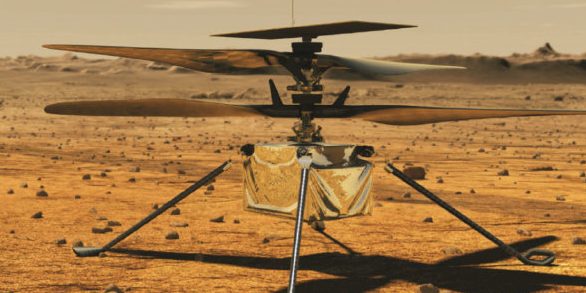April 19 2021 NASA announced Thursday that the “Smart” unmanned helicopter successfully completed its first flight to Mars, the first controlled flight of an artificial aircraft on another planet.
The Smart team said data from Mars back to Earth showed that The Smart completed its first flight to Mars in about 40 seconds, performing all the set actions of hover, descent and landing after rising three meters vertically.
According to the team, the “smart” test flight time on the 19th at 3:34 am EST (15:34 pm Beijing time), this point in time all aspects of the best flight conditions. The mission team received data from The Wits back to Earth via the Mars rover Perseverance at 6:46 am ET (18:46 pm BST) on the same day, confirming that it had risen to a preset flight altitude of 3 meters, hovered for about 30 seconds, and then landed and landed successfully on Mars.
According to reports, the mission team will continue to receive and analyze the “smart” first test flight data and images, for the second test flight to develop a plan. The second test flight is scheduled to take place no earlier than April 22.
Michael Watkins, director of NASA’s Jet Propulsion Laboratory, said the “smart” Mars helicopter took more than six years to complete from feasibility studies to the implementation of engineering concepts to the final first flight to Mars. Smart provides a three-dimensional perspective on mars exploration.
On February 18 this year, the Smart Mars helicopter landed on Mars aboard the Perseverance rover, which weighs about 1.8 kilograms and has four rotors that charge lithium batteries with solar panels. In order to be able to fly in the thin Martian atmosphere, the “smart” rotor speed is much faster than that of a helicopter flying on Earth.



